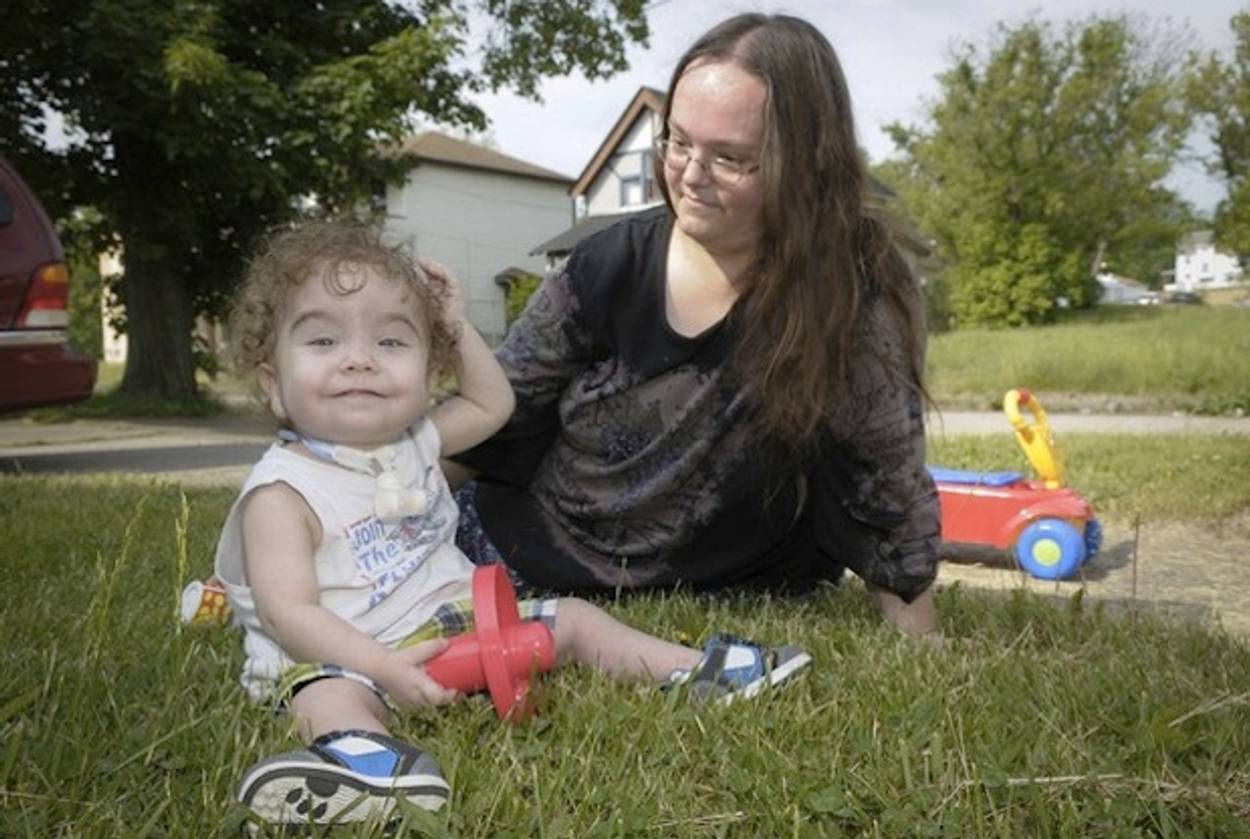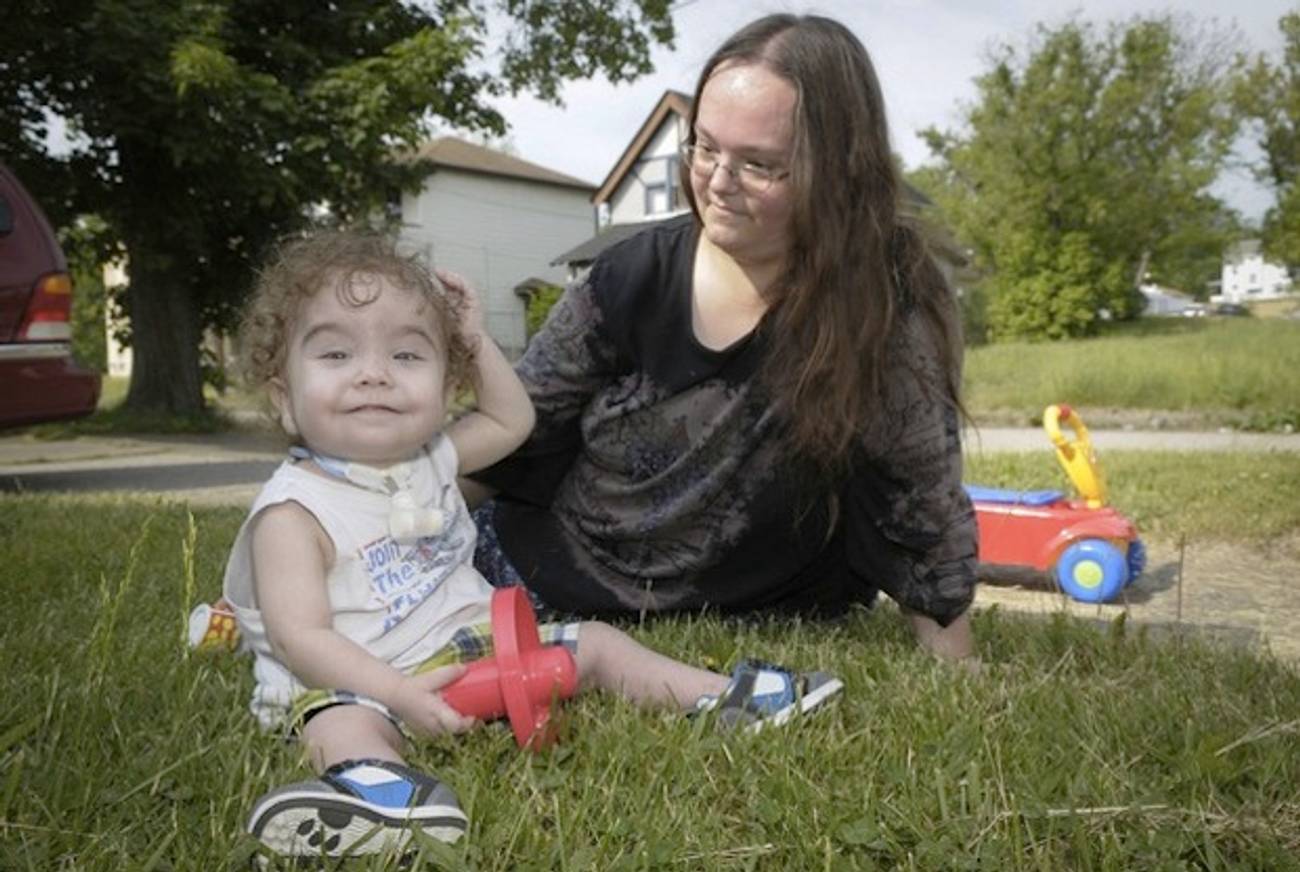3-D Printing Saves the Life of an Ohio Boy
And redeems all the world’s Glenns




There is considerable uproar brewing today about Glenn Greenwald’s latest Guardian article in which he asks aloud whether the two Islamic terrorists who attacked and killed a British soldier on the day-lit streets of London were terrorists or not. I’m trying to avoid paying too much attention to Glenn Greenwald these days and so I’d like to draw attention instead to Dr. Glenn Green, who helped save Kaiba Gionfriddo, a young Ohio boy’s life through a groundbreaking operation that involved 3-D printing.
Because of a birth defect, the little Ohio boy’s airway kept collapsing, causing his breathing to stop and often his heart, too. Doctors in Michigan had been researching artificial airway splints but had not implanted one in a patient yet.
In a single day, they “printed out” 100 tiny tubes, using computer-guided lasers to stack and fuse thin layers of plastic instead of paper and ink to form various shapes and sizes. The next day, with special permission from the Food and Drug Administration, they implanted one of these tubes in Kaiba, the first time this has been done.
Suddenly, a baby that doctors had said would probably not leave the hospital alive could breathe normally for the first time. He was 3 months old when the operation was done last year and is nearly 19 months old now. He is about to have his tracheotomy tube removed; it was placed when he was a couple months old and needed a breathing machine. And he has not had a single breathing crisis since coming home a year ago.
More from the Detroit News:
The medical first — featured in Wednesday’s New England Journal of Medicine — was pioneered by Dr. Glenn Green, an associate professor of pediatric otolaryngology at U-M, and his colleague, Scott Hollister, Ph.D., a U-M professor of biomedical and mechanical engineering and associate professor in the Department of Surgery.
It’s the first time 3-D technology was used in a procedure for a life-threatening condition, Hollister said. The next step will be clinical trials to obtain federal approval for the process and the eventual creation of body parts.
3-D printing is one of those things we’ll be hearing more and more about in the coming months as many continue to claim the innovation will usher in a new era. Writing about the ramifications of 3-D printing for the New Yorker, Friend-of-Scroll Jacob Silverman noted that while 3-D printers may be used to create illicit or dangerous items that could cause harm (Silverman focuses on Cody Wilson’s controversial first 3-D printed gun), the broader movement is largely centered on the good.
The cost of 3-D printing has dropped enormously in recent years, enabling the technology to move from high-end commercial use to the homes of thousands of hobbyists. (A basic 3-D printer can now be had for a few hundred dollars; a more elaborate model, MakerBot’s Replicator 2, runs twenty-two hundred dollars.) In one sense, Wilson is simply calling the maker movement—the scattered coalition of tinkerers and manufacturers, such as Brooklyn-based MakerBot, who believe that affordable, ubiquitous 3-D printing will herald a new industrial revolution—on its bluff, daring it to move beyond clothespins and garden gnomes (a popular design for MakerBot’s printers).
Clothespin, garden gnomes, and now breathing tubes.
Adam Chandler was previously a staff writer at Tablet. His work has appeared in the New York Times, the Wall Street Journal, the Atlantic, Slate, Esquire, New York, and elsewhere. He tweets @allmychandler.